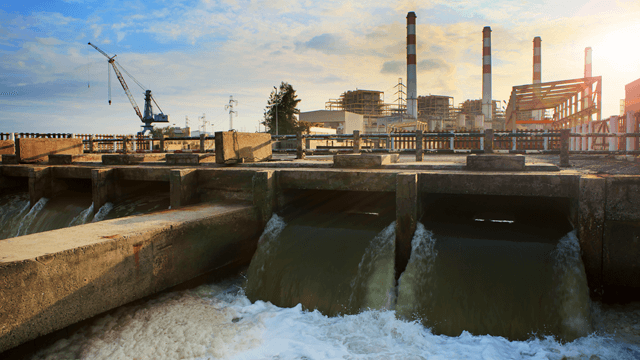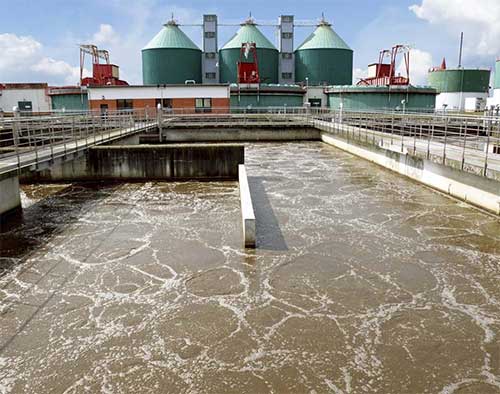Trick Methods in Hazardous Waste Water Therapy Procedures
The treatment of industrial wastewater is an essential aspect of environmental monitoring, involving a variety of methods created to minimize the effect of impurities. Advancements in technologies such as membrane purification and progressed oxidation procedures offer ingenious solutions for enhancing treatment efficiency.
Physical Therapy Approaches
How efficiently can physical treatment techniques resolve the complexities of industrial wastewater? Physical treatment methods play a critical duty in the initial stages of wastewater management, focusing largely on the elimination of solids and big particulates. Strategies such as flotation protection, sedimentation, and purification are necessary for minimizing the focus of put on hold solids, thereby boosting the effectiveness of succeeding therapy procedures.
Sedimentation involves the gravitational settling of solids, permitting for the splitting up of heavier materials from the wastewater. This technique is particularly efficient in clarifying water prior to chemical or organic therapies.
Additionally, flotation protection methods, which make use of air bubbles to raise put on hold solids to the surface area for removal, are reliable in dealing with wastewater with high focus of fats, oils, and oils. Generally, physical treatment approaches work as a critical primary step in the detailed monitoring of industrial wastewater, making sure that the load on succeeding therapy phases is minimized and enhancing overall treatment efficacy.
Chemical Treatment Strategies
While physical therapy techniques prepared for effective wastewater management, chemical therapy methods are essential for resolving the much more complicated pollutants often located in commercial effluents. These techniques utilize numerous chemical representatives to precipitate, counteract, or oxidize harmful compounds, guaranteeing a more thorough elimination of pollutants.
One typical strategy is coagulation and flocculation, where chemical coagulants such as aluminum sulfate or ferric chloride are included in promote the gathering of suspended fragments. This procedure boosts solid-liquid splitting up, lowering turbidity and improving water high quality. In addition, neutralization processes are employed to adjust the pH of wastewater, using acids or bases to counteract acidic or alkaline streams, specifically.
Oxidation-reduction reactions play an important function in derogatory natural impurities and pathogens. Chemical oxidants like hydrogen, chlorine, or ozone peroxide are utilized to break down complicated organic substances, making them less unsafe or more biodegradable. Furthermore, advanced oxidation processes (AOPs) combine multiple oxidation methods to enhance pollutant removal performance.
Biological Treatment Processes
The performance of wastewater therapy is dramatically boosted by organic treatment procedures, which harness the all-natural metabolic activities of bacteria to break down organic issue and eliminate toxins. Industrial Waste Water Treatment. These procedures largely entail cardio and anaerobic digestion, each tailored for specific kinds of wastewater
Cardio treatment processes utilize oxygen to sustain microbial growth, advertising the failure of natural contaminants right into co2 and water. Typical techniques include turned on sludge systems, where oygenation tanks promote the mixing of wastewater with microorganisms, and dripping filters, which encourage biofilm development on media surface areas.
Conversely, anaerobic treatment processes take place in the absence of oxygen, making use of anaerobic bacteria to decompose organic matter, causing biogas production, a renewable resource source. Anaerobic digesters are typically employed in commercial setups for this purpose, efficiently minimizing the volume of sludge while generating useful biogas.
The choice of a biological therapy method depends upon wastewater features, therapy objectives, and regulative requirements. The why not look here integration of biological procedures in wastewater treatment not just boosts contaminant removal efficiency yet likewise promotes sustainability by decreasing chemical usage and sustaining resource recovery.
Advanced Oxidation Processes

Usual AOP techniques include Fenton's ozonation, photocatalysis, and reagent. Fenton's reagent, a mix of hydrogen peroxide and ferrous iron, militarizes the development of hydroxyl radicals, making it efficient for dealing with wastewater containing phenolic compounds and other stubborn compounds. Ozonation utilizes ozone as a powerful oxidant, capable of breaking down a large variety of natural toxins while at the same time disinfecting the effluent. Photocatalysis utilizes light-activated catalysts, such as titanium dioxide, to boost oxidation responses and remove pollutants.
AOPs use numerous benefits, including decreased sludge manufacturing and the capacity to treat wastewater with high focus of natural contaminants. The application of AOPs requires cautious consideration of operational criteria and cost-effectiveness, guaranteeing that these advanced techniques are suitably integrated into existing wastewater treatment systems.
Membrane Layer Filtration Technologies

Microfiltration works for getting rid of put on hold solids and bacteria, while ultrafiltration targets smaller organic particles and viruses. Nanofiltration links the space in between ultrafiltration and reverse osmosis, effectively getting rid of natural compounds and divalent ions. Reverse osmosis offers the highest degree of purification, made use of primarily for desalination and removing mono-valent ions.
Membrane layer technologies supply numerous benefits, including reduced power consumption contrasted to traditional therapy methods, modular design for scalability, and the potential for water healing and reuse. Obstacles such as membrane fouling and the requirement for regular upkeep have to be my sources addressed to make sure system efficacy. Generally, membrane filtration technologies represent an important element of contemporary industrial wastewater therapy strategies, promoting sustainability and source preservation in water management.
Final Thought
In verdict, industrial wastewater treatment uses a diverse array of methods, including physical, chemical, biological, and progressed techniques. Proceeded advancements in these methodologies will certainly even more improve the efficiency and efficiency of wastewater therapy processes in commercial settings.
The therapy of industrial wastewater is a crucial facet of ecological management, entailing an array of techniques developed to minimize the impact of pollutants.Just how properly can physical therapy methods dig this deal with the complexities of industrial wastewater?Advanced oxidation procedures (AOPs) represent an advanced approach in industrial wastewater therapy, created to properly break down natural contaminants that are usually resistant to standard therapy approaches (Industrial Waste Water Treatment).In verdict, commercial wastewater treatment uses a diverse range of strategies, including physical, chemical, organic, and progressed methods. Continued developments in these approaches will even more improve the efficiency and efficiency of wastewater treatment processes in commercial settings